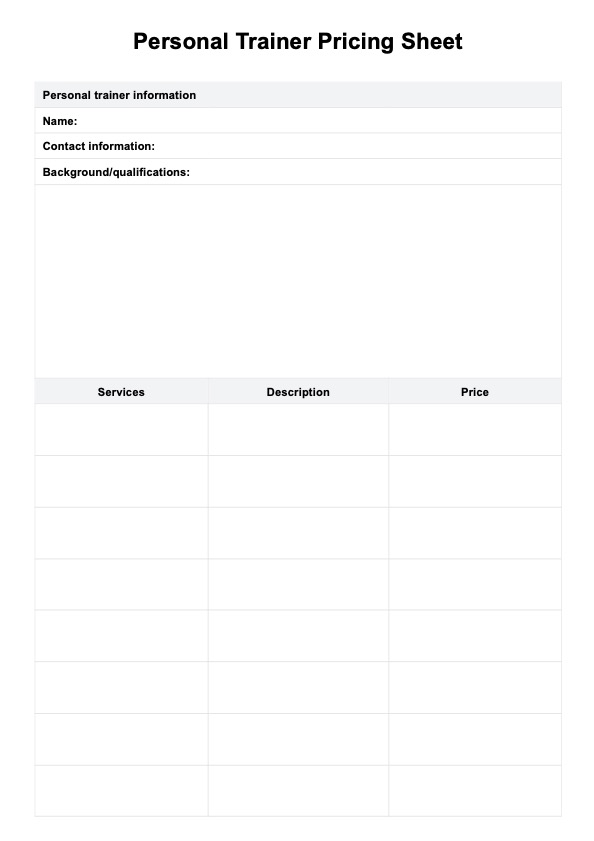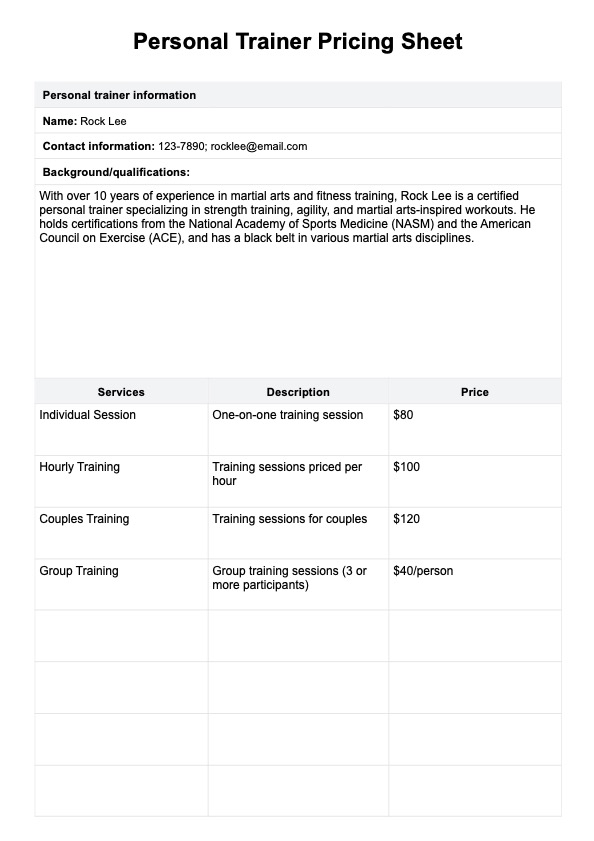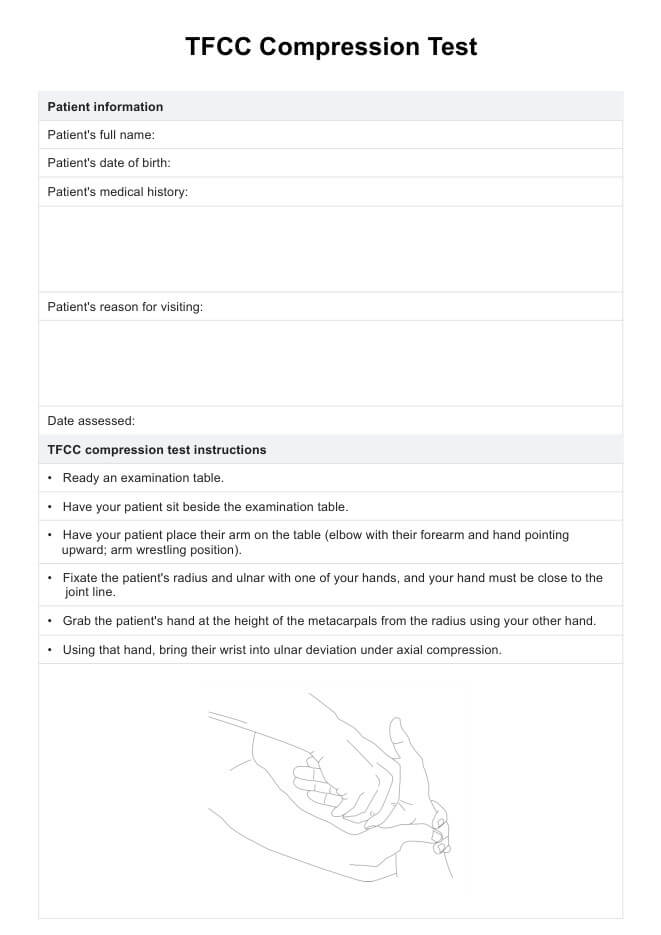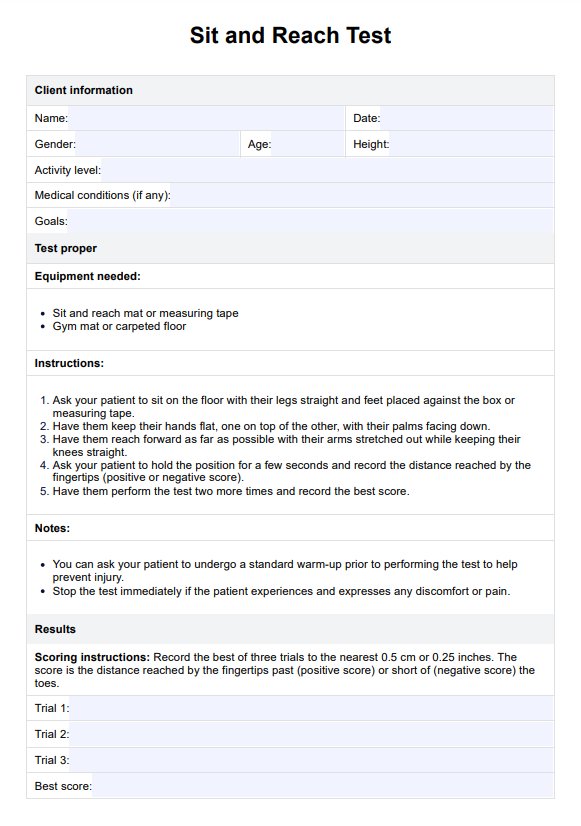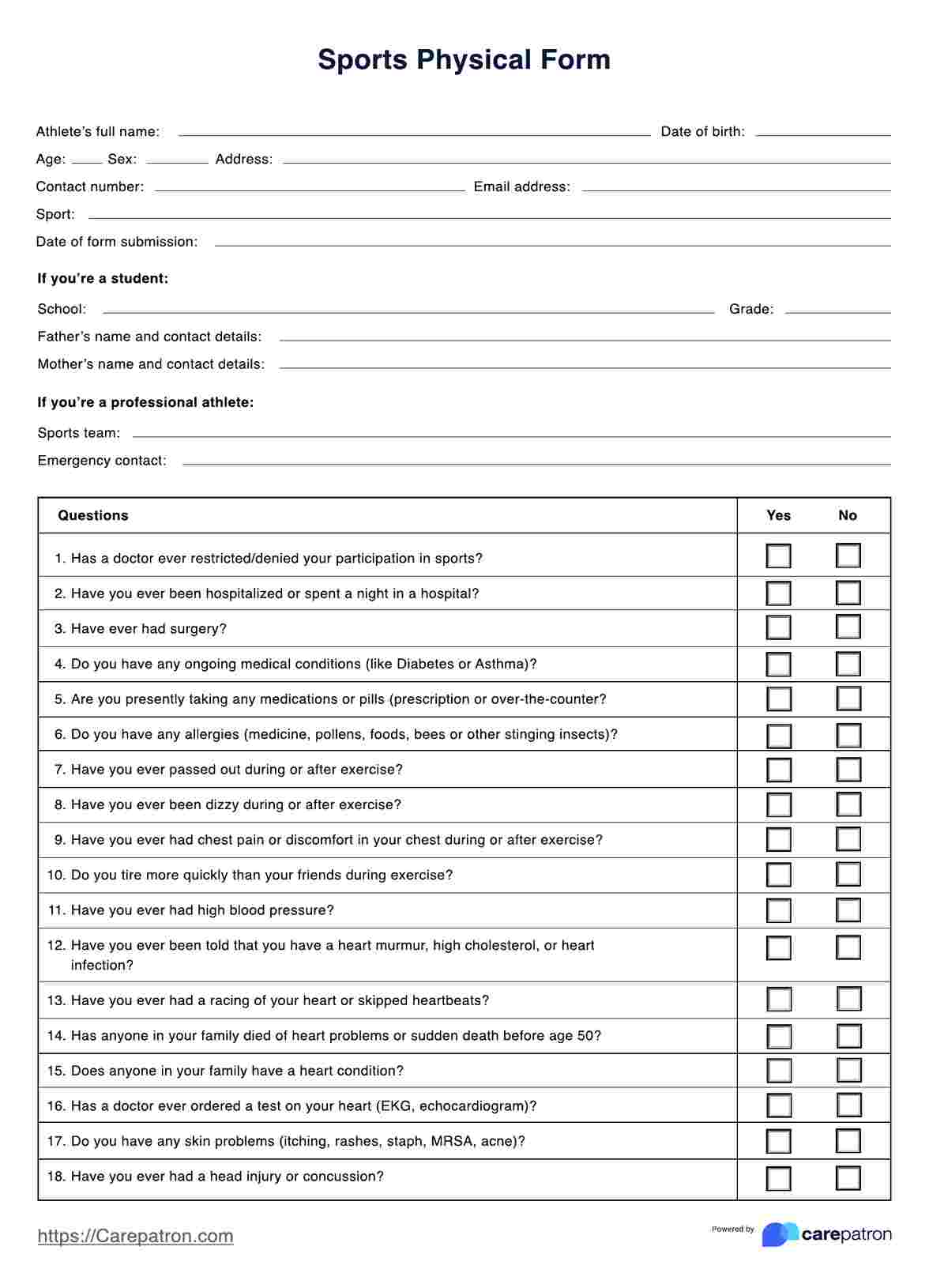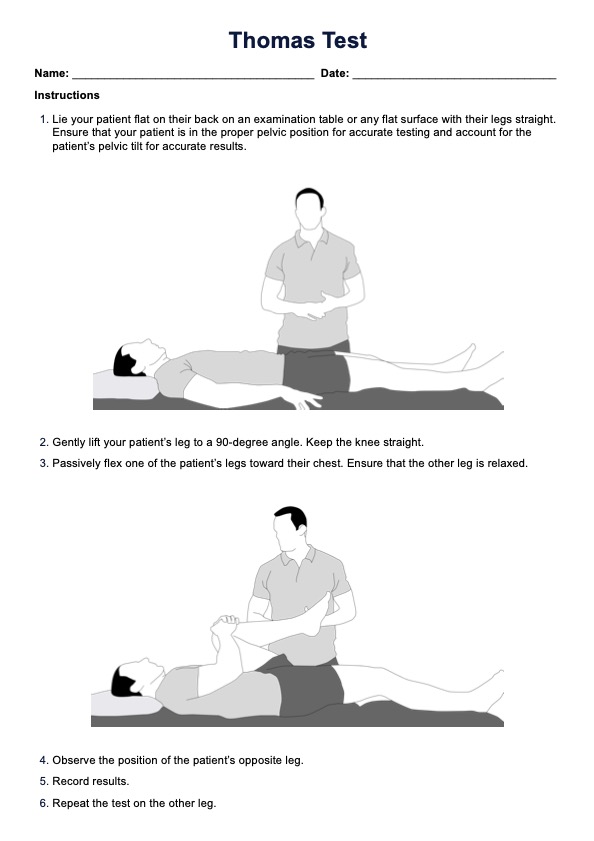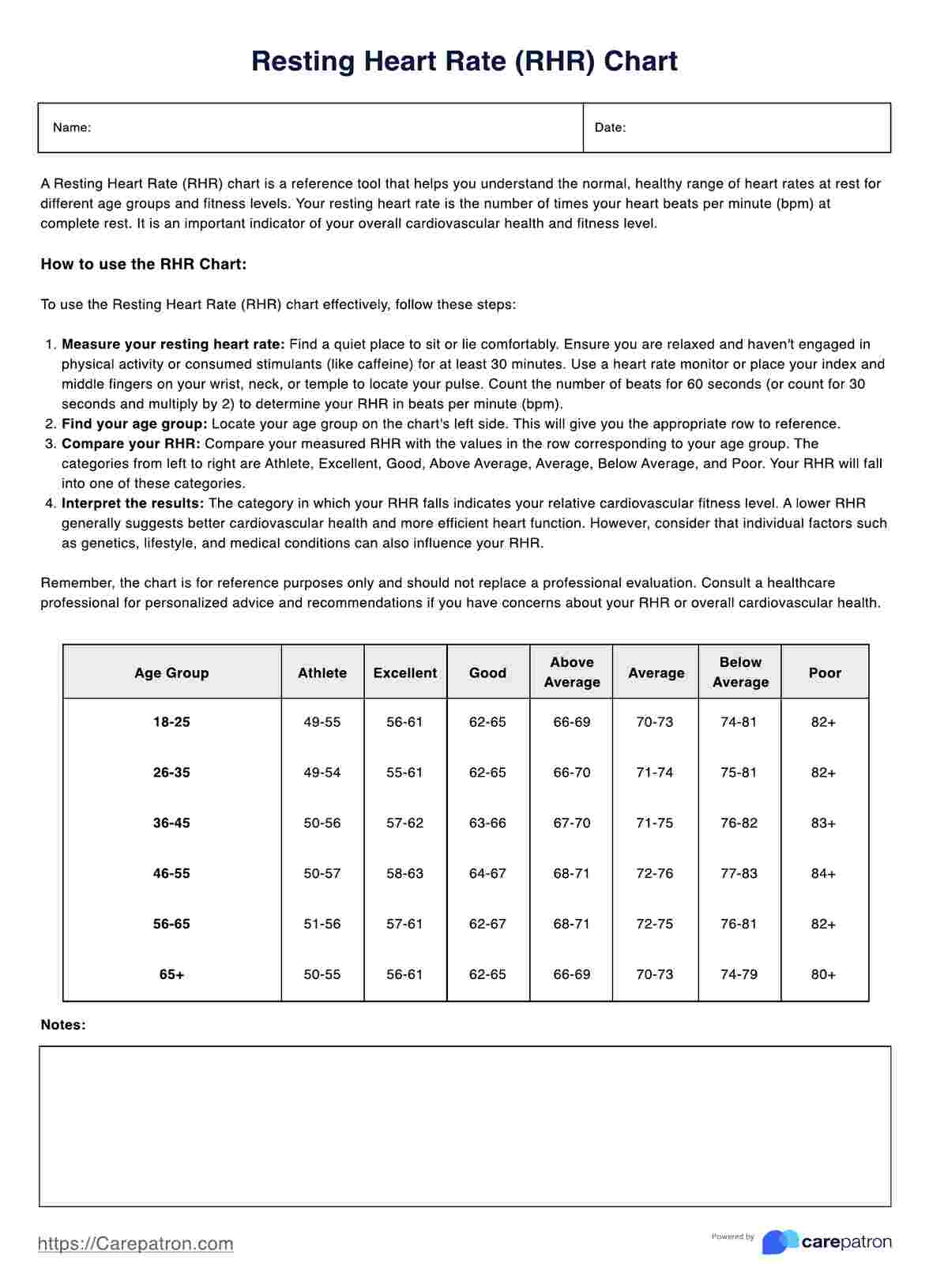Personal Trainer Pricing Sheet
Set competitive rates for personal training sessions with our Personal Trainer Pricing Sheet. Elevate your fitness business with transparent pricing.


How to price personal training services
If you are a personal trainer looking to start your independent practice, one of the first things you must consider is personal training prices. While starting your fitness business gives you autonomy, it also requires commitment and hard work to sustain it. Hence, knowing pricing structures will provide you with a headstart.
Pricing structure defines how you price your products or services. Depending on your client's specific needs and preferences, you may offer various pricing options such as hourly rates, package deals, or even a subscription membership. Other than these, allow them to opt for additional services on top of the basic ones. This can include customized workout plans, dietary advice, and group classes.
Consider offering discounted rates for group training sessions or when a client avails of multiple sessions. However, don't be too overwhelmed to provide every option possible. Listing every possible membership may confuse clients. It's better to keep membership options simple.
Factors to consider when setting personal training rates
When deciding on your personal trainer cost, you need to work on the following areas:
- Target market: Consider your target clients' demographics, such as their income levels, preferences, and willingness to pay for personal training sessions.
- Cost of operations: Calculate the expenses, including rent, equipment, certifications, insurance, and marketing. This will help ensure you cover them while still achieving your profit margin.
- Market demand: Research market trends, the fitness industry, needs, and services offered by other personal trainers. Determine baseline service prices and adjust them accordingly to remain competitive.
- Unique value proposition (UVP): The personal training industry will have competitors. Hence, you have to establish a compelling, UVP that tells your target clientele about the value of your services and what sets you apart from other local competitors. Investing in marketing will also help.
- Qualifications and certifications: We all start somewhere, and investing in your qualifications and certifications is good for attracting clients. When you have a proven track record, chances are you can set higher prices based on the perceived value of your expertise.
Whether you offer in-person or online personal training, knowing these factors can help you in planning business expenses to sustain your fitness programs.
Personal Trainer Pricing Sheet Template
Personal Trainer Pricing Sheet Example
What is a Personal Trainer Pricing Sheet?
A Personal Trainer Pricing Sheet is a tool that outlines pricing rates for the services offered by a personal trainer. It provides transparent information to personal training clients so they can understand and decide on the services they would like to avail based on their specific goals and budget.
A personal trainer may include additional information in this sheet, like payment options, terms and conditions, contact details, and qualifications. If you are starting, you can note in your pricing sheet that you offer a free fitness assessment to your clients, providing valuable information about their current fitness status.
How does our template work?
This template is handy as it gives your personal training business a professional touch. Just follow these steps below to reap its maximum advantage:
Step 1: Download the template
Obtain the Personal Trainer Pricing Sheet by clicking the "Use Template" button to access an editable version in the Carepatron app. You can also click "Download" to get a printable version that can be filled out either digitally or by hand.
Step 2: Personalize
Enter your name. In the designated section, briefly describe your background and qualifications. This will allow clients to see your personal training experience, adding credibility to your craft. Ensure your contact information is easily accessible within the document. Include your email address, phone number, or preferred contact method if clients need ongoing support.
Step 3: Fill out the table
List the services you offer and provide a brief description of each service. Enter the corresponding price for each service in the "Price" column.
Step 4: Customize membership options (if applicable)
Specify the details under the "Membership Options" section if you offer membership options. Describe the benefits of each membership type and set the pricing accordingly. Include any special deals or discounts you offer on the table. Clearly state the conditions of each deal or discount, including eligibility criteria.
Common pricing mistakes
When starting any business, it's common to make pricing mistakes. But to help you avoid these pitfalls, we'll give you a heads-up. Here are three common pricing mistakes to watch out for:
Underpricing your services
Setting low prices to attract customers is tempting, but underpricing can undervalue your expertise and lead to financial struggles. For example, as a National Academy of Sports Medicine (NASM) certified personal trainer, offering low-rate sessions might help attract clients initially. However, this approach can become unsustainable if it doesn't cover your costs or adequately reflect your level of expertise.
Overcomplicating your pricing structure
Too many pricing options can overwhelm potential customers and make it difficult for them to choose. Simplify your pricing structure by offering clear options catering to different needs and budgets. It's easier for clients to decide when they are not confused.
Neglecting to adjust prices over time
Market conditions, expenses, and your business's value proposition can change over time, which is why you need to evaluate and adjust your prices periodically. For example, if you obtained further certifications to improve your skills or build a reputation in the industry, it would be best to reflect these in your prices. Keep track of market trends to make your services relevant and sustainable.
Benefits of using this personal trainer price list sheet
A personal trainer price list sheet is a handy tool that helps both trainers and clients stay organized, transparent, and on track with their fitness goals. Here are its benefits:
Sets clear pricing expectations
Using a personal trainer price list sheet makes it easy for your clients to see exactly what they’re getting and how much it costs. Whether you're an online personal trainer or a group fitness instructor, it helps avoid any confusion and keeps everyone on the same page.
Makes scheduling and budgeting easier
A price list sheet helps clients plan their sessions and stick to their budget. It’s a simple way to keep everything organized for a fitness professional offering one-on-one or group sessions.
Builds professionalism and trust
Having a clear price list shows clients you’re organized and professional, which builds trust. When clients know exactly what they’re paying for, they’ll feel more comfortable working with you.
Commonly asked questions
Offering discounts for package deals or referral incentives can attract potential clients while maintaining value for your services.
It's essential to evaluate and adjust your prices periodically, typically every 6-12 months, to stay competitive and reflect changes in your business costs or market demand.
Yes, other professionals like a nutrition coach, group fitness instructor, or personal trainer can benefit from using a price list sheet.


